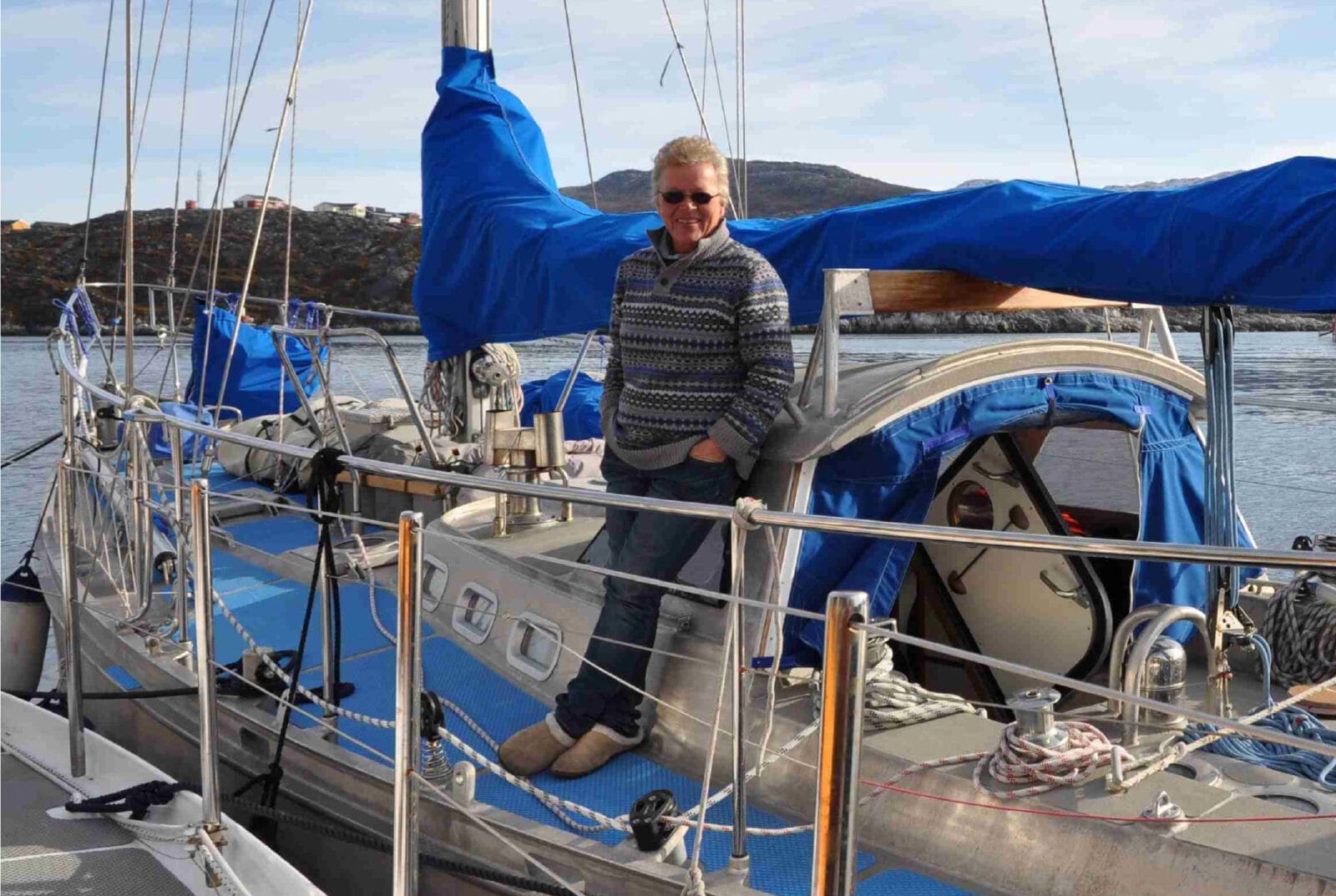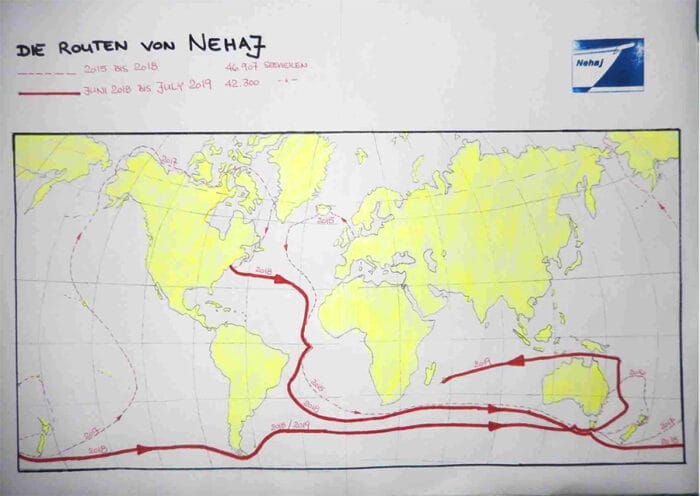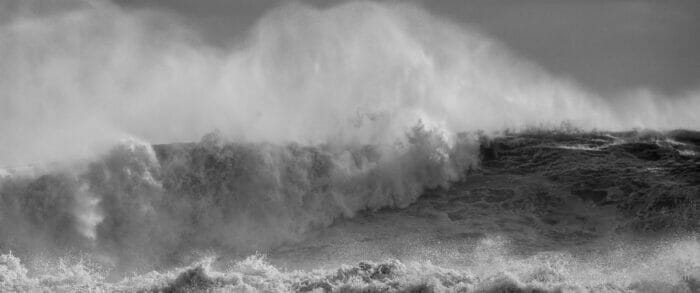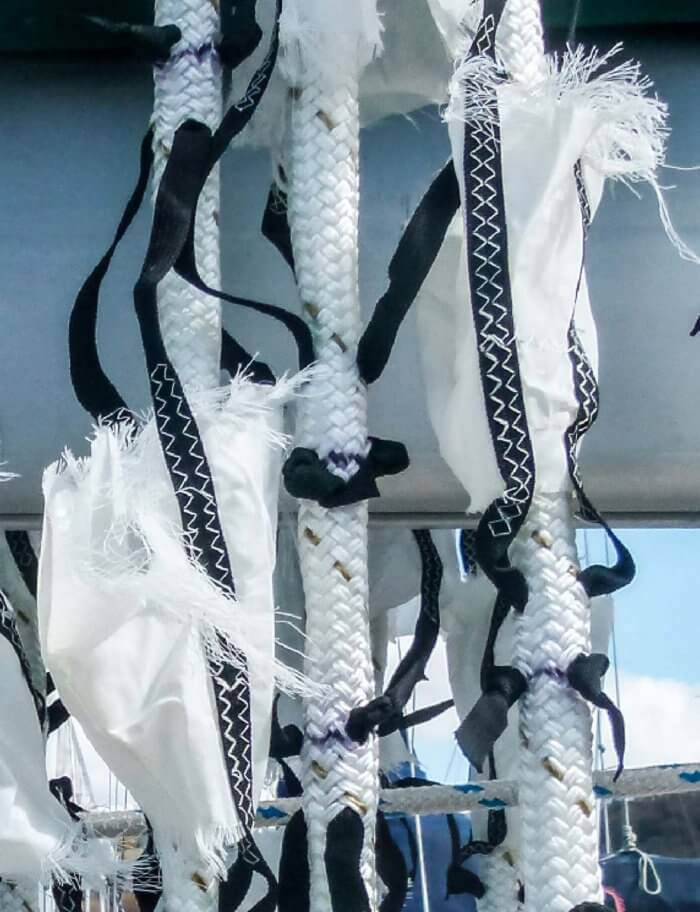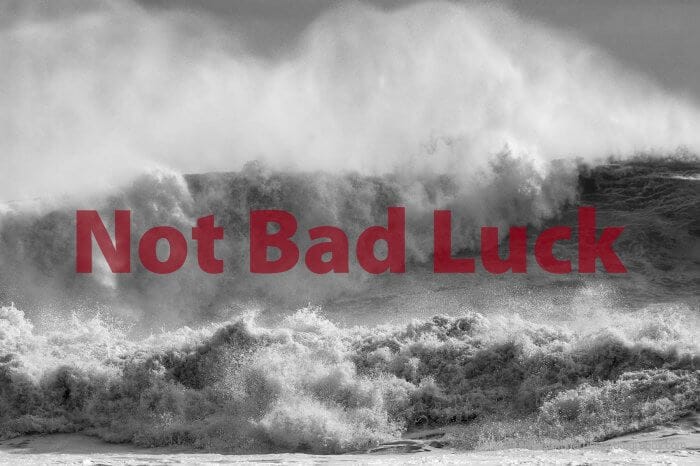
Tips, Tricks & Thoughts:
heavy weather
-
Never Trust a Hurricane
5 CommentsReading Time: 2 minutesMembers
-
Jordan Series Drogue Double-Proved Effective
25 CommentsReading Time: 3 minutesMembers
-
Get Vane Gear Blade Out Of The Water Before Deploying JSD
14 CommentsReading Time: < 1 minuteFreeAs I have said before, there are few people on the planet, probably less than a dozen, who know as much about surviving storms at sea in a small boat as Susanne Huber-Curphey.
I’m privileged to be on her email newsletter list. The latest contained the following nugget of wisdom:
This self-steering was also the reason why Ian on ‘Puffin’ did not deploy his Jordan-Series-Drogue (JSD) one week ago, causing his boat to capsize in a severe storm…
…Ian clearly experienced the most severe weather in an otherwise rather quiet GGR, but I do wonder why he activated the Epirb on the then undamaged boat, rather than deploying his JSD after getting the imminent warning of over 90 knots of wind for several hours by the race organizers…
Emphasis mine
…In my experience the exposed rudder of any self-steering system must be easily removable and stowed below deck in the to be expected, somehow wild conditions of a force ten or above.This confirms my thinking that Maxime has made the right choice in equipping the Adventure 40 with a servo pendulum gear, not an auxiliary rudder, since the boat will be tricked out for a JSD, as well as confirming my own reservations about the latter type of gear.
If you want to dig deeper into Susanne’s thoughts on the loss of Puffin, there’s an interesting conversation over at Peter Foerthmann’s site. Yes, Peter is hardly unbiased, but that doesn’t alter the fact we can learn useful things from him, particularly since he also makes an auxiliary rudder gear.
Further Reading
-
Jordan Series Drogue Works Even if Caught Beam On
2 CommentsReading Time: < 1 minuteFree
Susanne Huber-Curphy and I were chatting by email about her use of the Jordan Series Drogue, our (and her) recommended storm-survival gear, when she clarified a point I think many people worry about, unnecessarily as it turns out:
The most amazing thing of the JSD is that after a front has passed with a dramatic wind shift the boat might lay sideways to the old sea, but if a breaker hits the boat from the old direction she will immediately swing around against the new wind direction and take the impact safely on the stern. That’s easy to explain, as the force of breaking waves is stronger than the windage of the boat. I guess you have to experience this to really appreciate the magic of the JSD.
Susanne Huber-CurphyThis also makes sense in relation to Don Jordan’s original investigations.
And no one has has more experience than Susanne with the JSD in extreme conditions.
-
Don’t Use Old Sailcloth For a Jordan Series Drogue
9 CommentsReading Time: < 1 minuteFree
©Stuart Letton There’s an article on DIYing a Jordan Series Drogue (JSD), AAC preferred and recommended storm survival equipment, over at This Old Boat.
There’s some useful stuff to learn in the article; however, the author makes the terrible mistake of using old discarded sailcloth that she bought from a boat salvager for the cones.
We know from firsthand reports by our contributors that the cones do wear out over time, even when made with the correct brand new fabric, so making them out of old sail cloth that will certainly be sun damaged is a seriously bad idea that could render the JSD useless in an hour or so of deployment.
Remember, the JSD is our last line of defence in a survival storm. If it fails there is nothing between us and capsize, so cheaping out on any part of it makes no sense…even if we have to forgo that cool new plotter to do the JSD right.
More on storm survival and JSD construction, including firsthand use reports.
-
Q&A Hydraulic In-Boom Roller Furling in Antartica
7 CommentsReading Time: 3 minutesFreeQuestion
Very experienced member Matthieu Chauvel asked:
Does anyone have experience with hydraulic in-boom furling systems in below-freezing conditions (and/or proper heavy seas, 50 kts+)? Asking for owners of a yacht heading down to Antarctica that has what they (and the builder of course) say is quite a beefy, reliable custom system, but it hasn’t been tested in polar conditions yet.
Even night temperatures should remain well above the hydraulic fluid freezing point (call it -20 C with a little error margin) during the summer season, but maybe viscosity becomes a problem above that level? General ice build-up solutions and difficulty of sending crew forward while getting hosed down, at night, in towering waves already mentioned to them, but it would be nice to hear from people who have managed in that environment without problems, if any.
Answer
Sorry, I don’t have much useful experience with hydraulic in-boom in extreme conditions. I was in the Arctic with one of those systems, but it did not get that cold.
The one thought I do have is that fisherfolk out of Atlantic Canada regularly work the waters of Hudson Strait in early winter, and so do Norwegian fisherfolk up as far as Svalbard, with hydraulics so it must be a solvable problem.
But, more importantly, if I were taking a boat into the high latitudes I would not have a complex system like that, particularly since the builder admits it has not been tested in those conditions.
I’m assuming this is a big boat, but even so I would go with slab reefing and then if worried about sending someone forward to the mast, bring the lines aft, although that would not be my choice. Instead, I would do good mast pulpits and a proper centreline jackline system.
I might also consider a Park Avenue boom, but that could also catch snow and ice, so maybe not.
If worried about loads on the reefing lines because of the boat size, I would install cross connected winches with coffee grinder pedestals. Two people can easily move a lot of line with a setup like that.
One could also add a hydraulic drive to the winches, but that adds risk and I would want to know the boat could be operated safely if the hydraulics failed.
Skip Novak has managed big boats fine in extreme conditions this way for decades and Phyllis and I had no trouble with slab on a 56-foot boat, including reefing and striking in 50-knot winds on one memorable occasion.
I would also say to your friend, if the boat is too big to handle with these simple systems, then add crew, probably professional.
We only have to look at what happened on Escape to see the dangers of a boat that is too big for the crew, and has complex systems, and that was not in the Drake Passage where conditions are likely to be far worse.
And I can’t tell you how scared I was of the automated rig on a big boat I went to Greenland on. If we had encountered 50 knots and big seas things would have almost certainly ended badly.
I do differ from Skip in one regard. I would add a storm trysail on its own track with its own halyard, so when expecting extreme conditions the main would come down and the trysail set. This, together with a storm jib set on an inner stay, is a rig that can take us to hell and back in safety.
If your friend decides to stick with in-boom, then I would strongly recommend this change. In fact, they could just motorsail to and from Antartica with this rig up, and be safe.
Matt, given your experience, I’m guessing I’m preaching to the choir, and I get that your friend won’t want to make all, or maybe any, of my recommended changes for one voyage, but maybe that just means he or she has the wrong boat for going to Antartica.
Anyway, thinking and writing about this was interesting.
-
Don’t Ever Lie Ahull
3 CommentsReading Time: < 1 minuteFree
I can’t believe that experienced ocean sailors are still making the mistake of lying ahull in heavy weather and then blaming a freak or rogue wave when they get rolled.
We have known for over 40 years how dangerous lying ahull is.
Extra big waves are a reality in anything over gale force offshore, not freaks, so we need to properly equip and handle our boats to avoid being rolled when, not if, one comes along.


